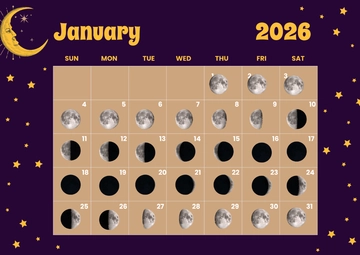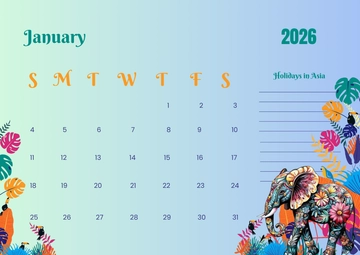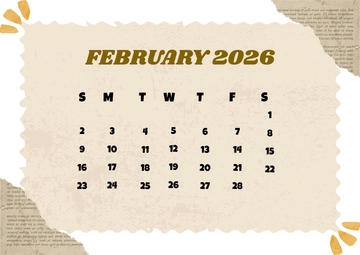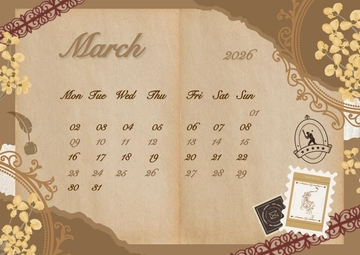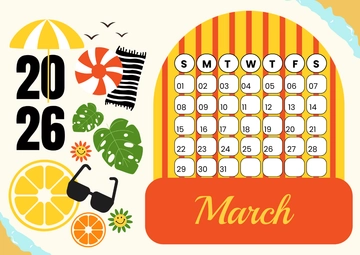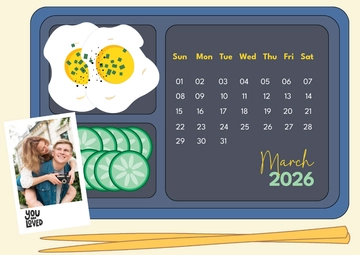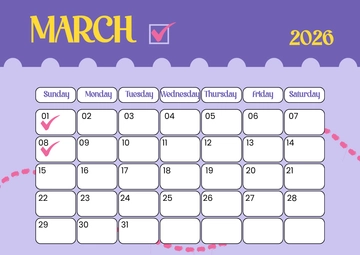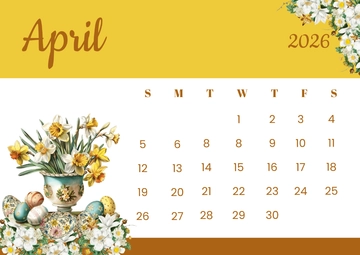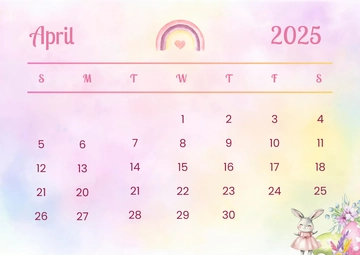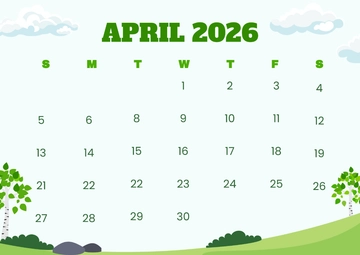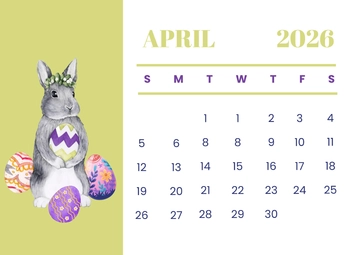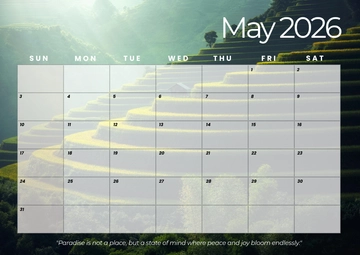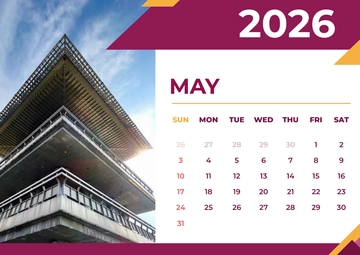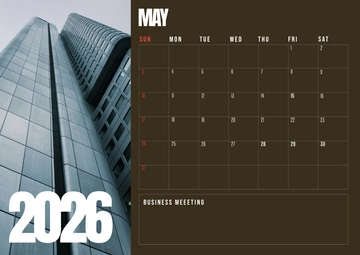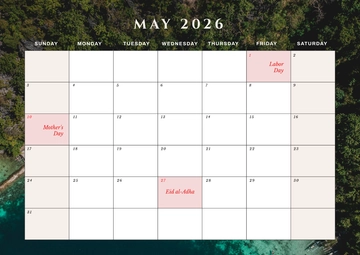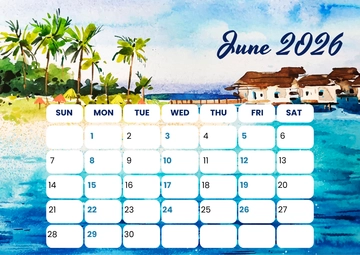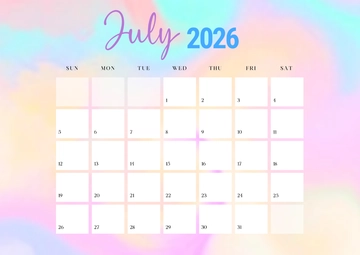Free Marketing Content Calendar Plan
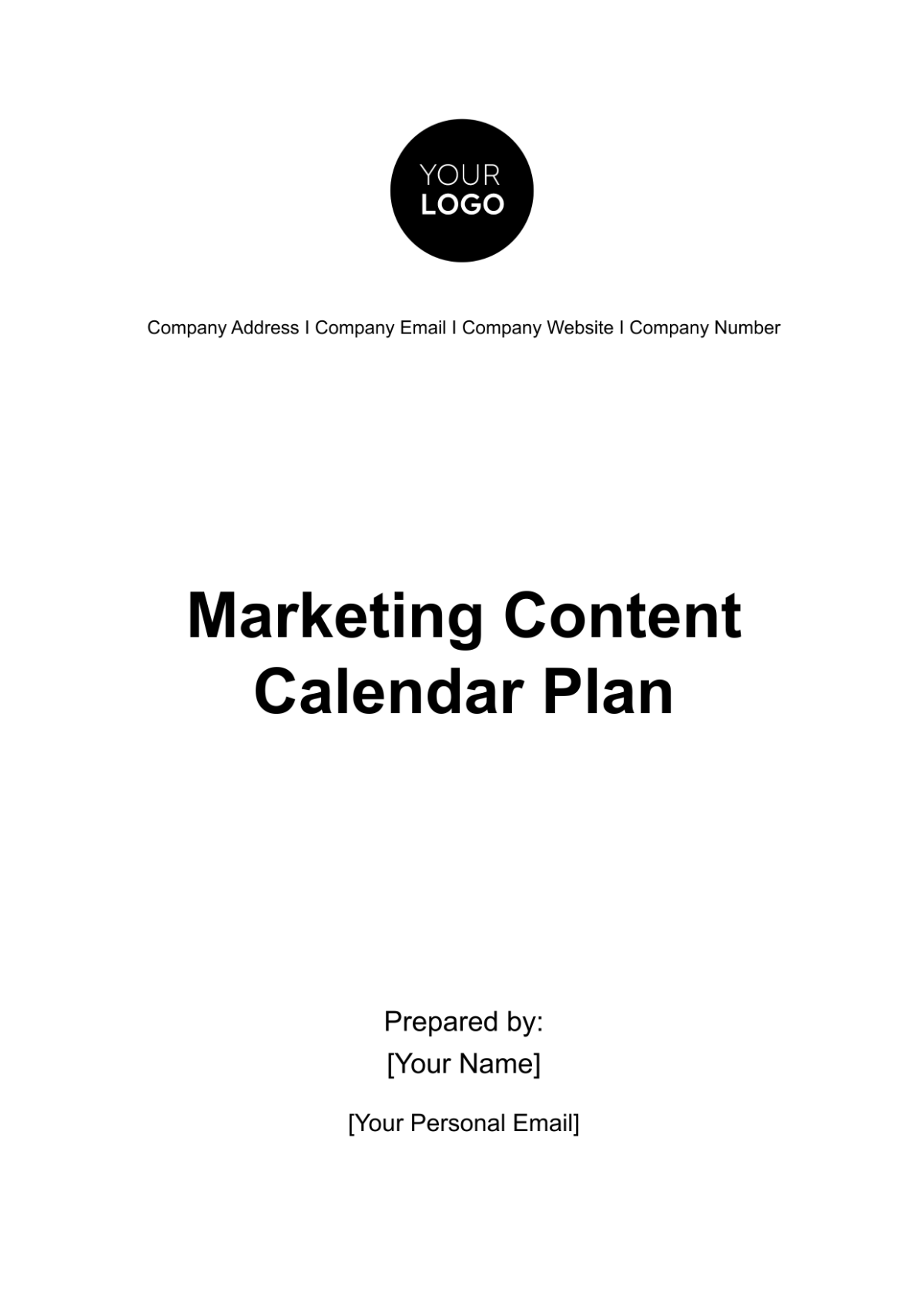
1. Executive Summary
The Marketing Content Calendar Plan presented herein outlines our comprehensive strategy for creating and executing a dynamic content calendar that aligns with [Your Company Name]'s core objectives, engages our diverse audience, and bolsters our brand's online presence. This plan encompasses a holistic approach to content generation, distribution, engagement, and performance analysis.
2. Introduction
A well-structured marketing content calendar is the foundation of a successful online engagement strategy. It not only provides direction but also serves as a framework for delivering relevant and valuable content to our audience. This Marketing Content Calendar Plan is designed to articulate the strategies and tactics that [Your Company Name] will employ to create a dynamic and engaging content calendar.
Mission Statement
[Your Company Name] is dedicated to leading the way in promoting sustainability, eco-conscious living, and responsible consumption. Our mission is to inspire and empower individuals and communities to make environmentally friendly choices while offering innovative, eco-friendly products and solutions. Through engaging and informative content, we aim to create a positive impact on the planet and future generations.
Vision Statement
At [Your Company Name], our vision is to be the foremost provider of eco-friendly products and resources, recognized for our commitment to sustainability, quality, and customer satisfaction. We envision a world where sustainable living is not just a choice but a way of life. Our content calendar is designed to contribute to this vision by fostering awareness, education, and engagement, ultimately driving positive change for a greener and more sustainable future.
3. Define Objectives with Data Projections and Forecasts
At [Your Company Name], we understand that content marketing is instrumental in achieving our business goals. Our objectives for the marketing content calendar are backed by data projections and forecasts, demonstrating our commitment to data-driven decision-making. These objectives include:
a. Increasing Brand Visibility
Objective: Enhance brand recognition and visibility in the digital landscape by consistently delivering high-quality, engaging content.
Data Projection: We anticipate a 130% increase in online brand mentions and a 250% growth in organic website traffic within the first 24 months of implementing this content calendar. These projections are based on historical data analysis and market research.
Forecasts: By the end of the fiscal year, we aim to achieve a 200% year-over-year increase in overall brand visibility, as measured by online mentions, social media reach, and search engine rankings. This growth will contribute significantly to our brand's digital presence.
b. Driving Audience Engagement
Objective: Foster meaningful interactions and engagements with our diverse audience, encouraging participation, sharing, and feedback.
Data Projection: Leveraging engagement metrics, we project a 240% increase in the average engagement rate across our social media platforms within the first 12 months. This projection is based on historical data and the implementation of best practices.
Forecasts: Over the course of the year, our goal is to maintain a consistently high engagement rate, with a projected 100% year-over-year increase. This increase will be a key indicator of our audience's active involvement with our content.
c. Promoting Products and Initiatives
Objective: Strategically showcase our eco-friendly products, services, and sustainability initiatives to our audience, driving interest and conversions.
Data Projection: Based on historical conversion rates and the impact of previous product promotions, we project a 90% increase in conversion rates for featured eco-friendly products and initiatives within the first 24 months of content implementation.
Forecasts: By the end of the year, we aim to achieve a 50% year-over-year increase in overall conversion rates, driven by the successful promotion of eco-friendly products and initiatives through our content. This increase will directly contribute to our sales and sustainability goals.
By aligning our objectives with data projections and forecasts, we are committed to measuring and evaluating the impact of our content calendar on our key performance indicators. This approach ensures that our content strategy is not only goal-oriented but also adaptable to evolving market dynamics and audience preferences.
4. Audience Segmentation with Data Projections, Expectations, and Recommendations
Understanding our audience is pivotal for tailoring our content effectively. We are committed to a data-driven approach in audience segmentation, which will not only guide our content creation process but also inform our marketing strategies. Here's how we plan to achieve this:
a. Data-Driven Audience Segmentation
Data Projections: We anticipate leveraging advanced analytics tools to conduct comprehensive audience analysis. Within the first 10 months of implementation, we project an 80% improvement in our understanding of audience demographics, interests, behaviors, and location.
Expectations: By the end of the fiscal year, we aim to achieve a 150% year-over-year increase in the accuracy of our audience segmentation. This improvement will enable us to deliver highly targeted content to specific audience segments, enhancing engagement and relevance.
Recommendations:
Data Collection Enhancement: Implement advanced data collection methods, including user surveys, website analytics, and social media insights, to gather in-depth information about our audience.
Behavioral Analysis: Conduct in-depth behavioral analysis to understand user interactions with our content, identifying patterns and preferences.
Personalization Tools: Invest in personalization tools to deliver tailored content experiences based on audience segments, boosting engagement.
b. Tailored Content Creation
Data Projections: With refined audience segmentation, we project a 70% increase in the click-through rate (CTR) for content tailored to specific audience segments within the first 3 months. This projection is based on industry benchmarks and historical data.
Expectations: Over the course of the year, we aim to maintain a consistently high CTR for segmented content, with a projected [Y%] year-over-year increase. This increase will be a key indicator of our content's relevance and effectiveness.
Recommendations:
Content Mapping: Develop a content map that aligns specific content themes and formats with each audience segment's preferences and needs.
A/B Testing: Continuously conduct A/B tests to optimize content elements, such as headlines, visuals, and messaging, for different segments.
Feedback Integration: Actively seek and incorporate feedback from different audience segments to refine content strategies.
c. Location-Based Targeting
Data Projections: Leveraging location-based data, we anticipate a 120% increase in engagement from specific geographic regions targeted with location-relevant content within the first 6 months.
Expectations: By year-end, we aim to achieve a 120% year-over-year increase in website traffic and conversions from location-targeted content, directly contributing to our regional expansion goals.
Recommendations:
Geo-Targeted Campaigns: Implement geo-targeted marketing campaigns to reach specific regions with tailored content and offers.
Localized Content: Create content that reflects the local culture, language, and interests of targeted regions, fostering a sense of connection.
Performance Tracking: Continuously monitor performance metrics for location-based content and adjust strategies based on real-time data.
5. Content Themes and Formats with Data Projections, Expectations, and Recommendations
Diversifying our content themes and formats is key to engaging our diverse audience effectively. We understand the importance of data-backed decisions in this aspect. Here's how we plan to accomplish this:
a. Content Themes
Data Projections: Using advanced analytics, we project a 250% increase in user engagement and interaction with our diversified content themes within the first 12 months. This projection is based on historical data analysis and industry benchmarks.
Expectations: Over the course of the year, we aim to maintain a consistently high level of user engagement across all content themes, with a projected 50% year-over-year increase. This increase will be a testament to our ability to cater to varied audience interests.
Recommendations:
Theme Performance Tracking: Continuously monitor and assess the performance of each content theme using engagement metrics to identify trends and preferences.
User Feedback Integration: Actively seek feedback from our audience regarding their preferences for content themes and adjust our content calendar accordingly.
Seasonal Relevance: Align content themes with seasonally relevant topics and events to maintain audience engagement throughout the year.
b. Content Formats
Data Projections: By offering diversified content formats, we anticipate a 120% increase in average time spent on our website and a 100% reduction in bounce rates within the first 10 months. These projections are based on industry best practices and historical data.
Expectations: Our goal is to maintain a low bounce rate and an increase in the average time spent on our website throughout the year, with a projected 20% year-over-year reduction in bounce rates and a 60% increase in average time spent.
Recommendations:
Multimedia Integration: Incorporate multimedia elements such as images, videos, and infographics within blog posts and articles to enhance engagement.
Content Testing: Regularly conduct content format testing to identify which formats resonate most with our audience and prioritize them accordingly.
Accessibility: Ensure that all content formats are accessible to a wide range of users, including those with disabilities, to maximize inclusivity.
6. Content Calendar
JANUARY | FEBRUARY | MARCH | APRIL |
1: New Year's Day - Office Closed 11: Content Drafting for Seasonal Event 12: Content Review Meeting | 5: Budget Brainstorming and Campaign Analysis 10: Content Archiving for Q4 2049 | 3: Blog Posting ‘’Top 10 Fall Fashion Trends’’ ℅ [Employee Name] 17: Jan-Feb Content Review and Performance Assessment | 11: Blog Post "Winter Skincare Routine" 15: Monthly Newsletter Beta Testing |
MAY | JUNE | JULY | AUGUST |
30: Memorial Day - Office Closed | 10: Q1 2050 performance review 20: Social Media Post | 4: Independence Day - Office Closed 10:Keyword Research for August articles | 15: Blog Post "Best Gifts for the Holidays" |
SEPTEMBER | OCTOBER | NOVEMBER | DECEMBER |
11: Strategic planning for Black Friday & Cyber Monday Marketing | 24: New Hire Training Session | 11: Logo Change for Facebook, Instagram, Twitter Pages | 25: Christmas Day 31: New Year's Eve - Half-Day |
Content Schedule per Week:
MONDAYS | Customer Satisfaction Reviews on Website forums |
WEDNESDAYS | Social Listening Sessions (Facebook, Twitter, Reddit) |
FRIDAYS | Team Huddle and team assignments for next week and scheduled posts. |
This table format provides a clear and concise overview of your content marketing plan for each month in Q4 2050, including content items, publication dates, platforms, and responsible team members.
7. Performance Monitoring and Analysis
We recognize the importance of measuring content performance to refine our strategies. Metrics to be tracked include:
Engagement Rate: Measuring interactions, such as likes, comments, shares, and clicks.
Click-Through Rate (CTR): Evaluating the effectiveness of our calls to action (CTAs) and content relevance.
Conversion Rate: Tracking conversions, such as sign-ups, purchases, or downloads.
Follower Growth: Monitoring the growth of our social media following.
Customer Feedback: Gathering valuable insights from customer feedback, reviews, and surveys.
8. Adaptation and Optimization
Based on the insights derived from performance analysis, we are committed to adapting and optimizing our content strategies. Our approach includes:
Iterative Content Refinement: Refining our content strategy based on engagement metrics to provide our audience with the most relevant and valuable content.
A/B Testing: Conducting A/B tests on various elements, such as headlines, visuals, and content styles, to identify what resonates best with our audience.
Content Calendar Adjustments: Regularly adjusting the content calendar based on performance data to ensure that our posts align with trending topics and audience preferences.
Informed Decision-Making: Leveraging metrics and analysis to inform our decision-making process, allocate resources effectively, and make strategic adjustments to our social media marketing efforts.
9. Future Plans
This Marketing Content Calendar Plan is a dynamic document that evolves with the changing landscape of content marketing. Our future plans include:
Regular Updates: To ensure that our content calendar remains current and relevant, we will review and update it regularly, with changes communicated to employees and stakeholders as necessary.
Employee Training: We understand that well-informed employees are key to effective content execution. We will develop training programs to educate employees on the content calendar's significance and how it aligns with their roles.
Stakeholder Communication: We value feedback and collaboration with our stakeholders. We will actively seek input from employees, customers, and partners to further refine our content calendar practices and enhance transparency.
Sustainability Initiatives: As part of our broader sustainability initiatives, we plan to integrate eco-friendly practices into our content calendar. This includes minimizing the environmental impact of printed content and promoting digital distribution.
Regulatory Compliance: We will closely monitor changes in applicable laws and regulations related to content marketing and adapt our practices to remain compliant with evolving legal requirements.
Technology Integration: Exploring technology solutions to streamline content creation, distribution, and engagement processes for greater efficiency.
10. Conclusion
This Marketing Content Calendar Plan serves as a roadmap for creating engaging, relevant, and purpose-driven content that resonates with our audience. By implementing these strategies and continuously analyzing our performance, [Your Company Name] aims to foster a vibrant online community, enhance brand loyalty, and contribute meaningfully to the eco-conscious movement.
For inquiries or further information, please contact us at [Your Company Website] or [Your Email]. We remain committed to delivering compelling content and nurturing valuable connections with our audience.
[Your Name]
[Your Company Name]
Marketing Templates @ Template.net
- 100% Customizable, free editor
- Access 1 Million+ Templates, photo’s & graphics
- Download or share as a template
- Click and replace photos, graphics, text, backgrounds
- Resize, crop, AI write & more
- Access advanced editor
Optimize your marketing strategy with Template.net's Marketing Content Calendar Plan Template. This editable and customizable tool, available in our Ai Editor Tool, streamlines content planning and scheduling. Tailor it to your brand effortlessly, ensuring consistency and efficiency in your marketing campaigns for enhanced engagement and results.
You may also like
- Holiday
- January Calendar
- February Calendar
- March Calendar
- April Calendar
- May Calendar
- June Calendar
- July Calendar
- August Calendar
- September Calendar
- October Calendar
- November Calendar
- December Calendar
- Monthly Calendar
- Weekly Calendar
- Birthday Calendar
- Daily Calendar
- Event Calendar
- Photo Calendar
- Christmas Calendar
- Summer Calendar
- Class Room Calendar
- Marketing Calendar
- Social Media Calendar

